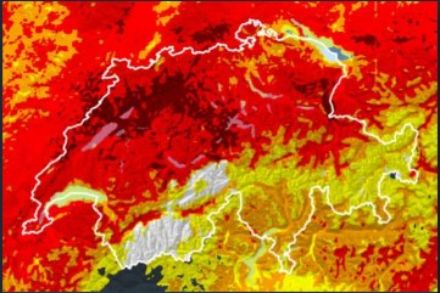Service Navigation
Search
During the pollen season, data from each measurement station were made available on the Wednesday of the following week. This network has, since 2022, been automatized, see Automatic pollen measurement network.
How a volumetric pollen trap works (Hirst design)
Each monitoring site has a volumetric pollen trap (Hirst type). With the help of a pump, this pollen trap sucks in ten litres of air per minute through a 14 x 2 mm opening. Behind this entry slot is a rotating drum on which there is a silicon-coated plastic strip. Pollen and other particles sucked in with the air stick to this strip. The drum is changed once a week and then sent to the analysis centre in Payerne where daily specimens are prepared using the strip. Forty-eight different pollen types are identified and counted under the microscope and concentrations per cubic meter air calculated. Apart from pollen, other organic particles, such as fungal spores, are also found on the specimen slide, as well as various inorganic particles, such as sand from the Sahara Desert or specks of soot.


Automatic measurement of airborne pollen concentrations
MeteoSwiss has developed expertise in automatic pollen monitoring over the past years, with the aim of making information available in real time to the Swiss public. Through collaboration with researchers, as well as testing of various instruments, the feasibility of automatic pollen measurements was demonstrated.
This was first carried out through a MeteoSwiss project that has made real-time data available in Switzerland. The Lucerne-based company, Swisens SA submitted the winning bid to a public call for tenders issued in 2019. After extensive testing in spring 2020 confirmed the efficacy of its “Swisens Poleno” system, the company provided automatic pollen monitors for the whole MeteoSwiss monitoring network. The first stations in this network were made operational from the 2021 pollen season onwards.
Information about airborne pollen levels is now available within minutes of the measurement, thus providing a precise picture of what is in the air at any given time. These real-time data have also allowed MeteoSwiss to improve the forecasts as well as the quality of information provided.
MétéoSuisse also coordinates a European programme on automatic pollen monitoring.

